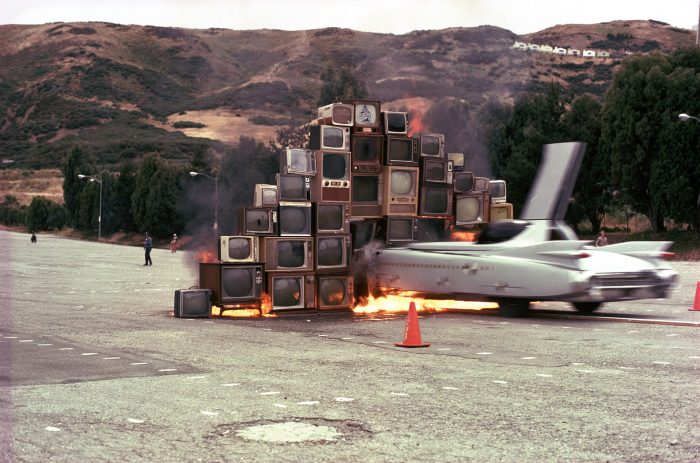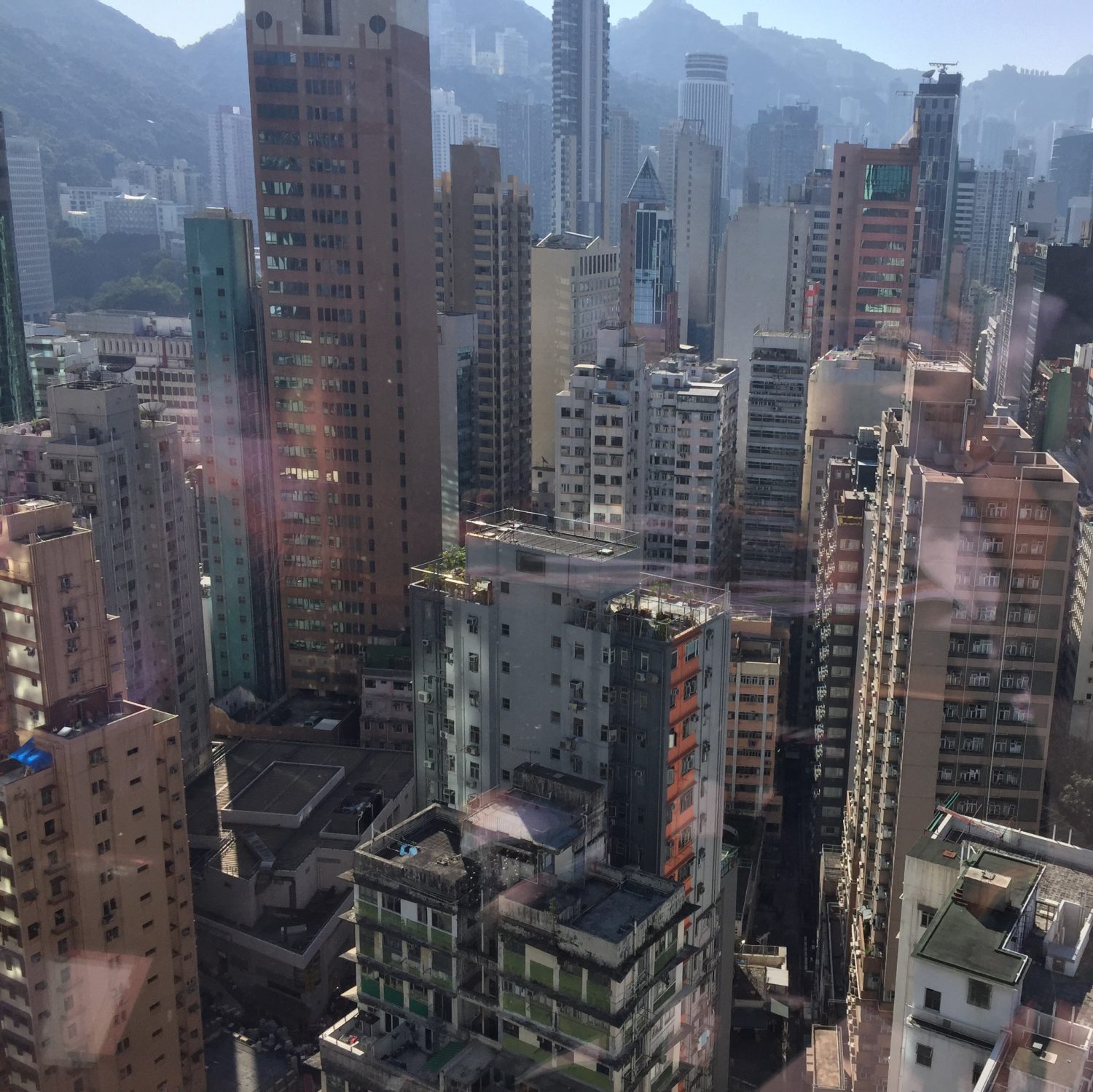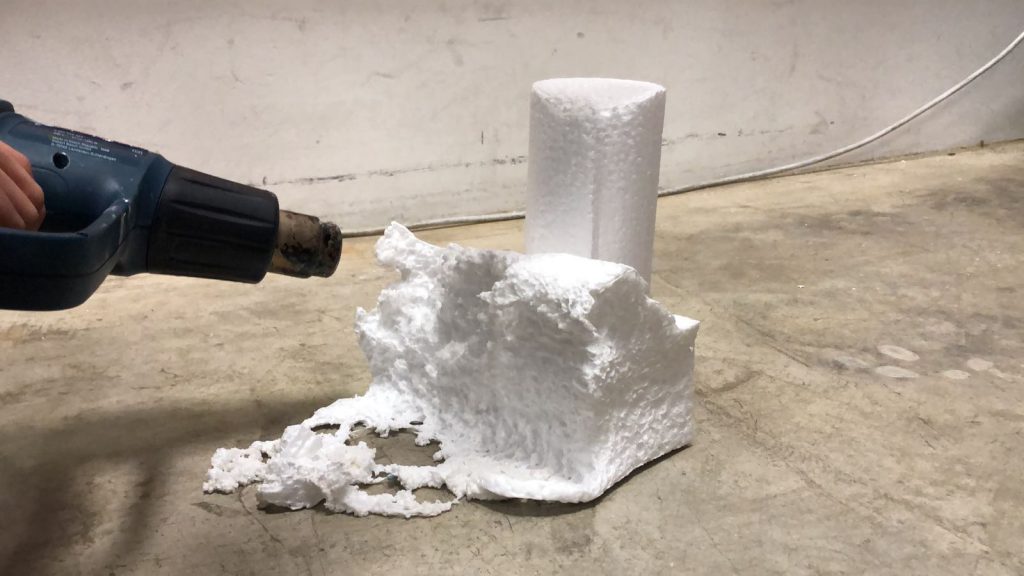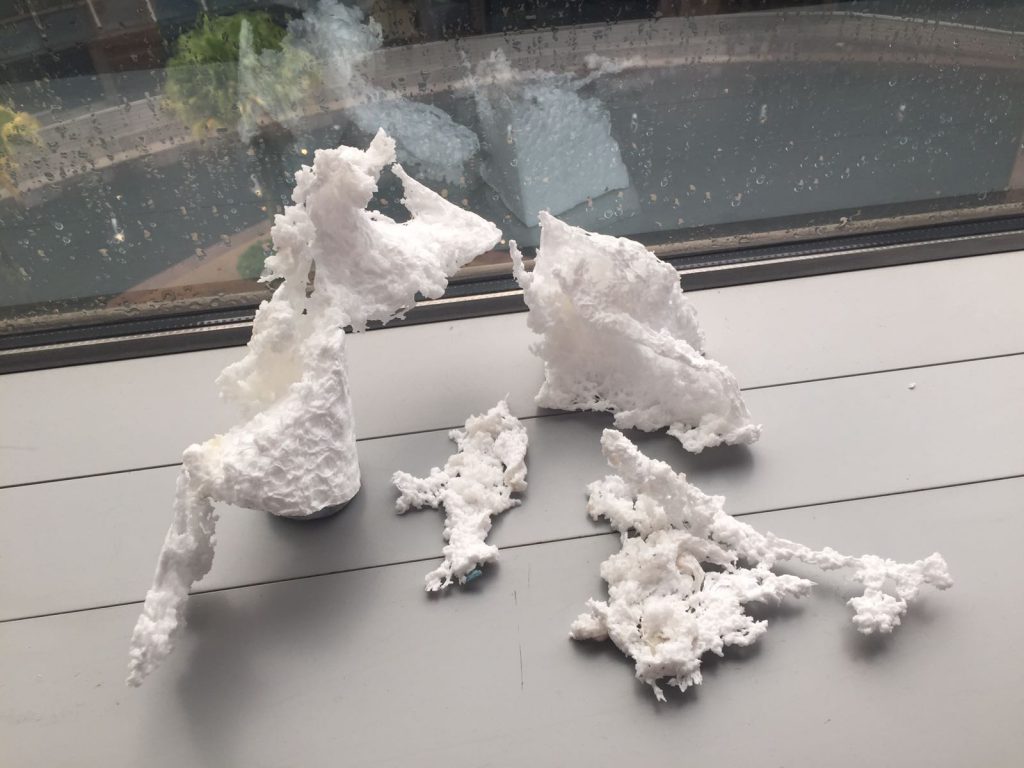
the art of styrofoam destruction
For our micro-project, the art of destruction, Jia Ying, Frederick, Melo and I ‘destroyed’ the original state/shape of these styrofoam pieces that we found in the 3D room. We reused random pieces which previous users had considered as ‘trash’ and transformed it into a new form of creation.
It didn’t matter to us what the original shape was, nor how it would turn out to be. This was our way of embracing inconsistencies and accidents; just by going with the flow of how the heat gun wanted to corrode the styrofoam which turned out it disintegrated slowly into nothing. Through the destruction, the solid state of our styrofoam structure transformed into toxic within the air which we then inhaled 🙂
Through this project, I started to look at the term ‘destruction’ in a different light. With the negative connotation that it tends to hold, this project conveyed examples that demonstrated destruction as another form of construction; something we can choose to look at positively instead of negatively. With reference to the glitch studies manifesto article, Rosa Menkman said, ” I emphasize the positive consequences of these imperfections by showing the new opportunities they facilitate. ”
Relating this project back to our glitch exercise, the intentional ‘bugging’ of something acts as a form of artistic expression by being a “poetic embrace of noise and error”, as quoted by Jon Cates. The glitched images that we created reminded me of abstract art. It pushes us to break the standard rules and boundaries of art that it normally conforms to. “Pushing different aspects o the machine world to see their thresholds, and experiment and play.” Not only were our glitched outcome a form of experimental artistic expression, the process of how it came about to be from person to person allows for every individual’s input.







